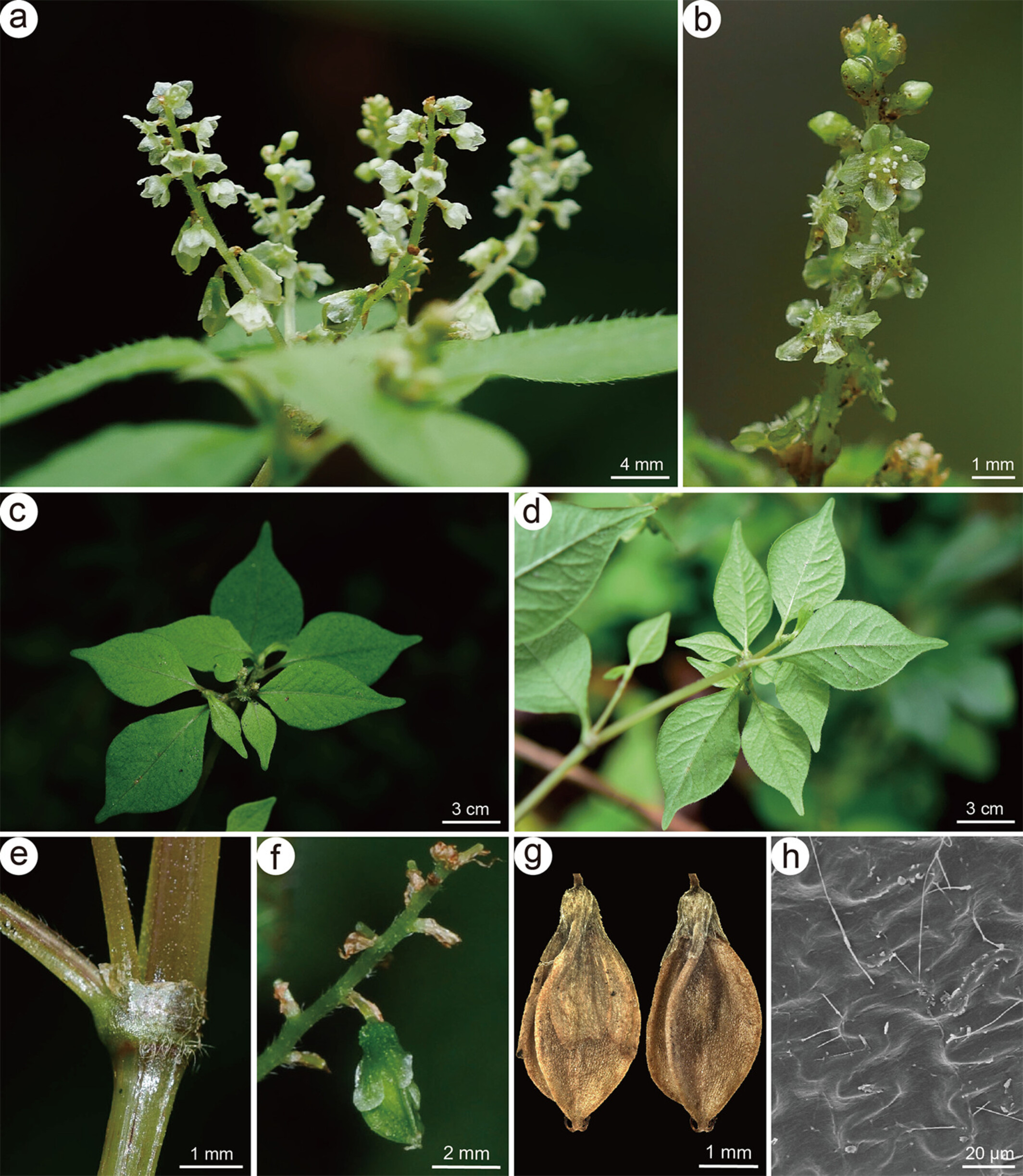Researchers from Xishuangbanna Tropical Botanical Garden (XTBG) of the Chinese Academy of Sciences have recently reported a new plant species, Koenigia medogensis, in the remote Medog County of southeastern Xizang (Tibet), China.
The new species, belonging to the buckwheat family (Polygonaceae), was consistently found during field surveys conducted between 2017 and 2024 near Lage Village in Dexing Town. Its initial identification was based on morphological characteristics such as its stems, leaves, and inflorescences, which suggested a close relation to the genus Koenigia. It was later confirmed through molecular phylogenetic analyses using three chloroplast DNA markers (matK, rbcL, and trnL-F).
What sets Koenigia medogensis apart from all known related species is its unique reproductive strategy: it produces bulbils—small bulb-like vegetative structures—at both the tips of its stolons (horizontal stems) and at the base of its flower clusters. This dual production of bulbils is exceptionally rare within the Polygonaceae family and is believed to be an evolutionary adaptation to ensure reproductive success in the region’s exceptionally wet monsoon climate.
Koenigia medogensis is a perennial herb. It is morphologically similar to Koenigia mollis and Koenigia filicaulis, but distinctly different from them in growth habit, leaf shape, inflorescence structure, and most notably, its ability to reproduce asexually via bulbils. This combination of traits warranted its classification as a new species.
The new species is typically found growing on wet, grassy slopes at elevations between 1,500 and 2,500 meters. It flowers from June to September and fruits from July to October.
Currently, Koenigia medogensis is only known from two adjacent sites in Medog County, making it endemic to this region. Although the observed populations appear stable and abundant, its limited distribution and potential vulnerability to threats such as human disturbance, habitat degradation, and natural disasters. The researchers thus recommended its conservation status as Data Deficient (DD) according to IUCN Red List criteria.
The new species has been published in Ecology and Evolution. The research work was supported by the National Natural Science Foundation of China and the Biological Resources Programme of the Chinese Academy of Sciences.

Partial morphological characteristics of Koenigia medogensis . (Image by XTBG)
First published: 31 August 2025

